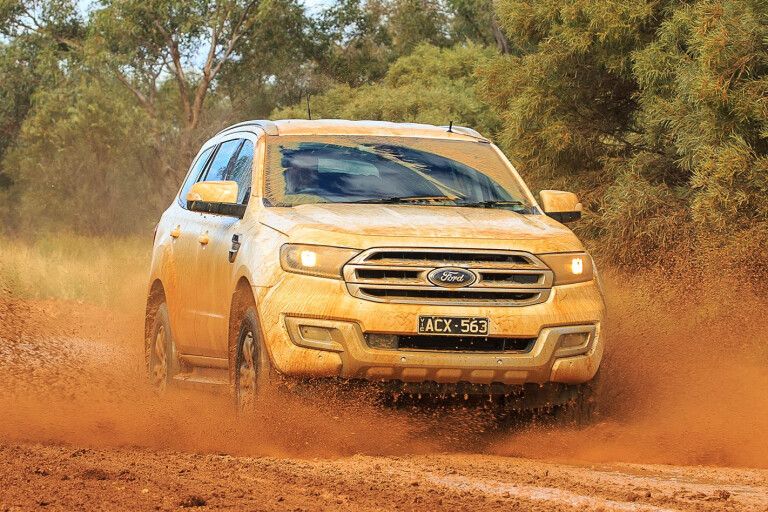
IT’S BEEN six months since our 2015 4X4 Of The Year test, where we judged the Ford Everest Trend as the pick of the season’s crop.
We haven’t seen much of the Australian-designed and engineered wagon since then, but we’ve remained keen to spend some more time with it and see how it performs over some outback kilometres.
So when Ford Australia’s offer of a three-month Everest loan coincided with the annual Finke Desert Race in the Northern Territory, we jumped at the opportunity to seek out the red dust and stunning sunsets.
The white Trend lobbed to our office with 10,000km already on it, so it was well and truly run in. The run to Alice Springs for the Finke race was just days away, so we sought out a set of more durable tyres than the OE offering.
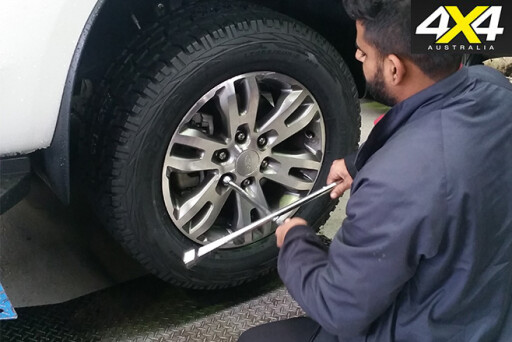 Fortunately for us, Cooper Tires had just released a new size in its A/T3 range: 265/60R18s. These are just right for the Trend, with the added durability of Light Truck construction and the traction of an All-Terrain tread pattern.
Fortunately for us, Cooper Tires had just released a new size in its A/T3 range: 265/60R18s. These are just right for the Trend, with the added durability of Light Truck construction and the traction of an All-Terrain tread pattern.
Some of our writers have had great results with the Cooper A/T3S, with unbelievable mileage, so we were pretty sure they’d suit the Everest without upsetting its on-road ride and dynamics.
The on-road ride and refinement had been instrumental in the Everest’s success at 4X4OTY, and these traits were still at the fore as we loaded it up with camping kit and left Melbourne early on a winter’s morning. The relaxed gait of the five-cylinder diesel engine coupled with the six-speed auto transmission had the Ford cruising comfortably; we were in a similar state as we rolled into Mildura for breakfast.
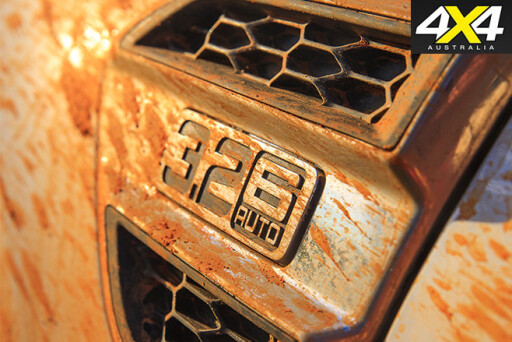 Melbourne to Mildura is a relatively tedious drive, but it was made easier by the great driving position, dual-zone climate control and quality sound system. However, our re-acquaintance with the Everest reminded us of a few complaints we had with its interior design. Firstly, the lack of reach adjustment on the steering column means that the tiller is too far away for long-legged drivers. Secondly, the HVAC controls are a poor design, with small buttons positioned too low and in a dark part of the centre console.
Melbourne to Mildura is a relatively tedious drive, but it was made easier by the great driving position, dual-zone climate control and quality sound system. However, our re-acquaintance with the Everest reminded us of a few complaints we had with its interior design. Firstly, the lack of reach adjustment on the steering column means that the tiller is too far away for long-legged drivers. Secondly, the HVAC controls are a poor design, with small buttons positioned too low and in a dark part of the centre console.
It would have been so much better if the volume and tuning dials of the audio system were located up higher in the centre stack near the A/V screen; and the temperature control dials, not buttons, could go in the space vacated by them.
Our aim was to break the back of a long drive and put as many kilometres behind us as possible on the first day, and it seemed like no time before we rolled into Peterborough to enjoy a couple of well-deserved coldies and a country feed.
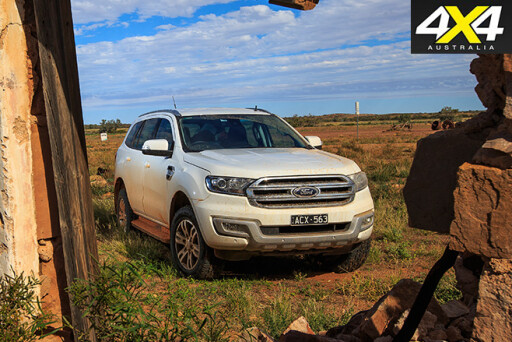 From Peterborough it was a long morning’s drive before we grabbed lunch at the historic Farina bakery. This place is a must-see location, operating among the ruins of the old township just south of Marree. It was great to see the work done by the volunteers here, and we grabbed a pie from the age-old underground oven.
From Peterborough it was a long morning’s drive before we grabbed lunch at the historic Farina bakery. This place is a must-see location, operating among the ruins of the old township just south of Marree. It was great to see the work done by the volunteers here, and we grabbed a pie from the age-old underground oven.
Marree was the starting point for our adventure drive along the old Ghan Railway Line up to Alice Springs, which you’ll read about in next month’s magazine. The Oodnadatta Track had just re-opened after a few days of rain and we were anxious to see how the Everest handled the outback roads.
Stay tuned.
Specs
Total distance: 14,350km
Date Acquired: May 2016
Price: $60,990
Distance this month: 4290km
Av fuel consumption: 10.9L/100km
UPDATE 1
The Everest gets the ultimate Oodnadatta experience
UNLESS you read the magazine from back-to-front, you would have seen that our Ford Everest has worked its way up the Oodnadatta Track to Alice Springs.
Last month we left off at Marree, which marks the start of the track and also where it meets the Birdsville Track. From there we travelled north, taking in the usual tourists sites at the various railways sidings: Coward Springs, the William Creek Hotel and the Pink Roadhouse.
Heavy rainfall the weeks preceding our trip had closed the Oodnadatta Track, but it was opened just days before we left Peterborough. It was still closed north of the Pink Roadhouse – where the track veers west to meet the Stuart Highway – due to flooding, which suited us as we had planned to follow the line of the Old Ghan Railway to Finke and then on to Alice.
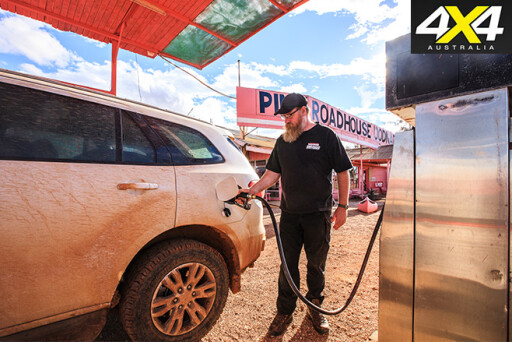 Stopping at the Roadhouse for fuel, an ‘Oodna Burger’ and some local info revealed that many travellers heading to the Finke Desert Race had passed through the open roads earlier in the day. Even though the roads were open, they were still very wet in places and the muddy conditions gave us the chance to sample the Everest’s Terrain Management System (TMS).
Stopping at the Roadhouse for fuel, an ‘Oodna Burger’ and some local info revealed that many travellers heading to the Finke Desert Race had passed through the open roads earlier in the day. Even though the roads were open, they were still very wet in places and the muddy conditions gave us the chance to sample the Everest’s Terrain Management System (TMS).
The Everest’s full-time on-demand-drive system works almost like a two-wheel drive set-up under normal driving conditions, with very little drive being sent to the front axle. It’s only when wheel-slip is detected at the rear axle that the system sends more torque to the front wheel. This is reactionary and there is a bit of a delay in how quickly it works – enough of a delay to get you stuck in the wrong conditions.
 To avoid the delay and reduce the risk of getting stuck, the driver can select one of the off-road modes in the TMS: Snow/Mud/Grass; Sand; or Rock. You can feel the differences in the TMS system by flooring the throttle on wet grass or another equally slippery surface.
To avoid the delay and reduce the risk of getting stuck, the driver can select one of the off-road modes in the TMS: Snow/Mud/Grass; Sand; or Rock. You can feel the differences in the TMS system by flooring the throttle on wet grass or another equally slippery surface.
In Normal mode, the rear wheels slip before the front wheels take up the slack and pull you forward. In any of the off-road modes the drive to the front is instantaneous and doesn’t allow the rear wheels to slip as much.
Snow/Mud/Grass mode was selected for the slippery conditions, and we either mashed it through the mud and ruts or worked our way around the detours that had been formed in places where the track was impassable. Needless to say, the Everest got us through – helped by the more aggressive Cooper AT3 tyres we’d fitted to it.
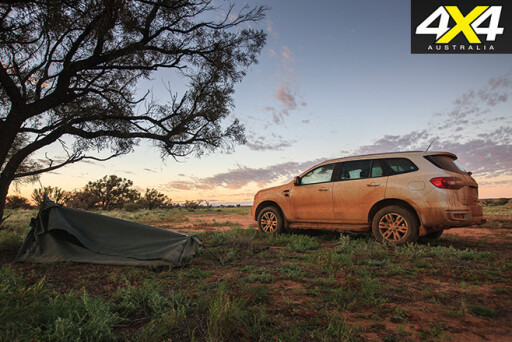 One complaint about the TMS is the dial used to select the mode. Instead of having four detented positions, it is infinitely adjustable both clockwise and anticlockwise. So instead of being able to select a mode by feel without looking away from the track, you need to divert your gaze to see what mode it is in. To its credit, the TMS mode is displayed on the gauge binnacle as well, but it would be much nicer if you could do it with a simple turn of the dial.
One complaint about the TMS is the dial used to select the mode. Instead of having four detented positions, it is infinitely adjustable both clockwise and anticlockwise. So instead of being able to select a mode by feel without looking away from the track, you need to divert your gaze to see what mode it is in. To its credit, the TMS mode is displayed on the gauge binnacle as well, but it would be much nicer if you could do it with a simple turn of the dial.
After a couple of days in Alice Springs, and following the Finke off-road race, the Everest returned to Melbourne via a tour of the West MacDonnell Ranges, Kings Canyon and Uluru.
UPDATE 2
They say time flies when you are having fun, and three months with the Everest have already come to an end
HAS IT really been three months already? They say time flies when you’re having fun, and we’ve had our share of fun with the 4X4OTY-winning Everest Trend. And like all of our long termers, we’ll be sad to see it go back.
Since returning from its epic Red Centre expedition, the Ford Everest has been on commuter duty in Melbourne. It serves this purpose well, as it’s spacious and comfortable, and the heater warms up quickly in the mornings. It makes weekend escapes easy, too, as the cargo area takes a pushbike and a bit of gear with the second- and third-row seats folded flat.
The rear seats also accommodate passengers – ideally, two adults in the second row and kids-only in the third row. Limit it to that and there shouldn’t be any complaints from the back. On the outback trip, one of our adult, second-row-seat passengers mentioned that the seat belts tightened up uncomfortably over the rough roads, and it was tricky to get them to release.
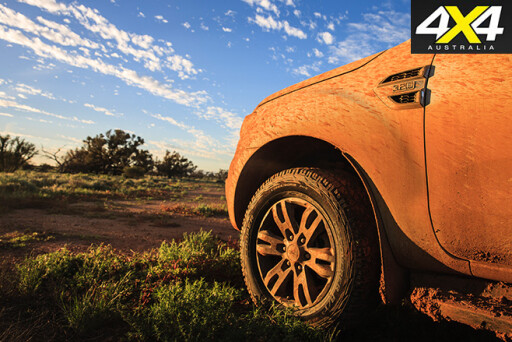 The city grind is much different to outback touring, but we still appreciate the large glasshouse of the Ford that provides good visibility for the driver when pulling out of side streets – though we still we prefer the view of wide-open bush plains on the other side of the glass.
The city grind is much different to outback touring, but we still appreciate the large glasshouse of the Ford that provides good visibility for the driver when pulling out of side streets – though we still we prefer the view of wide-open bush plains on the other side of the glass.
The urban slog is also harsher on fuel use than the open road, and around town we’ve averaged 13.2L/100km in the stop-start stab ’n’ steer environment. That equates to an average of 11.1L/100km over our three months with the Trend, which isn’t bad considering its size, weight and the heavier Cooper AT3 tyres we had fitted to it.
The Cooper tyres have been faultless, enduring the rocky outback tracks and remaining quiet on highway and city roads. Any noise is certainly cut out by the Everest’s clever active noise cancelling system, which adds to the excellent overall refinement of the wagon.
We’ve tested the Everest under many different conditions, and the past three months has reinforced our decision to award it our 4X4 of the Year accolade.



COMMENTS